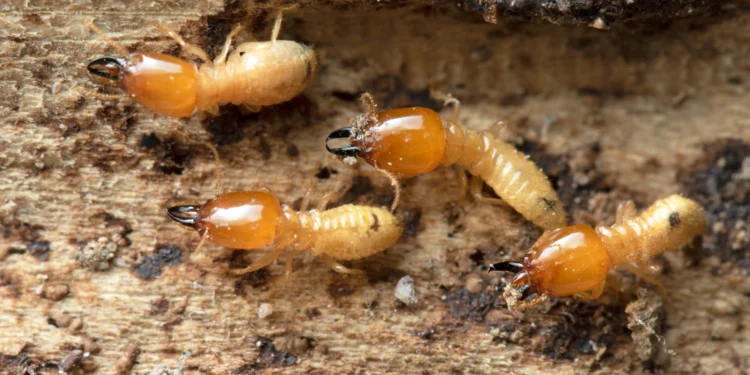Termites are a silent menace that can cause significant damage to homes across Australia, and the Gold Coast is no exception. With its warm, humid climate, the region provides ideal conditions for termite colonies to thrive year-round. For homeowners, prevention is far better than costly repairs, making termite barriers a critical component of home protection. This article explores the top termite barrier solutions available for long-lasting protection in Gold Coast homes, explaining how each method works, its pros and cons, and suitability for different property types.
Understanding Termite Barriers
Termite barriers are physical or chemical systems installed to deter or kill termites before they can enter a structure. These barriers can be installed during the construction phase (pre-construction) or added to existing buildings (post-construction). Choosing the right termite barrier depends on several factors, including the type of construction, local termite activity, soil type, and budget.
1. Chemical Soil Treatments (Termiticides)
Overview:
Chemical soil treatments involve applying liquid termiticides to the soil around and beneath a building to create a treated zone that repels or kills termites.
How It Works:
Termiticides can be repellent (forcing termites to avoid treated areas) or non-repellent (allowing termites to pass through and carry the poison back to the colony). The latter is often preferred for its ability to eliminate entire colonies.
Popular Products:
- Termidor®
- Biflex®
- Premise®
Pros:
- Long-lasting protection (up to 8–10 years depending on product)
- Proven effectiveness against subterranean termites
- Can be used for both pre- and post-construction
Cons:
- Requires professional application
- Soil disturbance may reduce effectiveness
- Potential environmental concerns
Suitability:
Ideal for homes with existing gardens or lawns where trenching and injection can be performed.
2. Physical Termite Barriers
Overview:
Physical barriers are materials installed during the construction phase to physically block termite entry into a building.
Types:
- Stainless Steel Mesh (e.g., Termimesh): Fine woven mesh installed around service penetrations and slabs.
- Granular Barriers: Specially graded stones or aggregates that termites cannot tunnel through.
How It Works:
Termites are unable to penetrate or bypass these materials, effectively preventing access to the structure.
Pros:
- Chemical-free and eco-friendly
- Permanent solution with no need for reapplication
- Low maintenance
Cons:
- Must be installed during construction
- Higher upfront costs
- Limited retrofit capability
Suitability:
Best for new builds or major renovations where access to foundations is possible.
3. Reticulation Systems
Overview:
A termite reticulation system is a network of underground pipes that allows termiticide to be evenly distributed around a property over time.
How It Works:
The pipes are installed around the perimeter or under the slab, and chemical termiticide is periodically pumped into the system to maintain a treated zone.
Pros:
- Easy and cost-effective reapplication of chemicals
- Even chemical distribution
- Long-term solution with regular maintenance
Cons:
- Requires periodic refilling (every 3–5 years)
- Initial installation cost can be high
- Relies on chemical effectiveness
Suitability:
Suitable for both new homes and retrofitting around existing properties.
4. Baiting Systems
Overview:
Termite baiting systems attract termites to a bait station, where they consume a slow-acting toxic substance and carry it back to the colony.
How It Works:
Bait stations are placed around the property. Worker termites feed on the bait and spread the poison through the colony, leading to colony elimination.
Popular Brands:
- Sentricon®
- Exterra®
Pros:
- Environmentally friendly with minimal chemical use
- Targets entire colonies
- Ideal for sensitive areas (near water or gardens)
Cons:
- Requires ongoing monitoring and maintenance
- Slower acting compared to soil treatments
- Effectiveness varies based on termite behavior
Suitability:
Excellent for areas where chemical barriers are impractical or environmentally sensitive zones.
5. Integrated Termite Management (ITM)
Overview:
ITM combines multiple termite control methods to provide comprehensive protection tailored to the specific risks of a property.
How It Works:
A combination of physical barriers, chemical treatments, and baiting systems is used based on site-specific assessments and termite activity levels.
Pros:
- Holistic and highly effective approach
- Customisable to suit property needs
- Reduces reliance on any single method
Cons:
- Higher initial cost
- Requires professional assessment and planning
- Ongoing monitoring required
Suitability:
Best for high-risk termite zones or homes with a history of termite issues.
Choosing the Right Barrier for Gold Coast Homes
The Gold Coast presents unique challenges due to its sandy soils, high humidity, and frequent building activity. When selecting a termite barrier system, consider the following:
Climate:
The subtropical climate means termites are active year-round. Long-lasting, weather-resistant barriers are crucial.
Soil Type:
Sandy soils can impact the performance of certain chemical barriers, so proper application by trained professionals is vital.
Property Type:
- New Homes: Physical barriers or integrated systems offer long-term savings and superior protection.
- Existing Homes: Chemical treatments and baiting systems are typically more practical for retrofitting.
Budget:
Chemical solutions and baiting systems can be cost-effective in the short term, while physical barriers may offer better value over the long run.
Final Thoughts
Protecting your home from termites is a vital investment, especially in termite-prone areas like the Gold Coast. With the right termite barrier solution, homeowners can enjoy peace of mind knowing their property is safe from these destructive pests. Whether you opt for a chemical treatment, a physical barrier, or a comprehensive integrated system, consulting with a licensed termite management professional is key to ensuring proper installation and ongoing effectiveness.
Preventative action today can save thousands in future repairs and preserve the value and integrity of your home for years to come.











